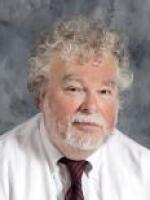When Buffalo Mayor Byron Brown approved the Common Council’s controversial new district map this week, he argued it would result in seven majority-minority districts, compared to just six in the alternative map proposed by activists.
However, those activists now say Brown’s analysis factors in people of color under the age of 18 and immigrants, both of whom can’t vote yet. When counting only those who can vote, activists say, the Council’s map includes just three majority-minority districts.
Cornell ILR School geographer Russell Weaver drew up the alternative map for Our City Action Buffalo, and became deeply knowledgeable about the 2020 Census and what it says about the changing population of the city, particularly the increasing immigrant population who are still seeking citizenship.
“Six of the nine districts [in the Council’s map] have a majority citizen voting age population that is white,” Weaver said. “And then for Our City Action's alternative plan, that number goes down from six to four.”

The most derided district in the Council’s new map is Fillmore, whose boundaries have been the subject of redistricting fights for several Census cycles. The district’s new lines resemble a snake sprawling across Buffalo, from Broadway-Fillmore, past Canalside and up to the Elmwood Village.
Weaver said the Fillmore District is also the most noticeable shift to white-majority voting power in the Council’s new map.
“The way the district is drawn now, the way that it was drawn back in 2011, that would be a plurality-white citizen voting age population district, where there is no outright majority but the largest group are white citizens,” he said. “However, the Council's map really reinforces that and makes it a majority-white citizen voting age population district.”
That’s in contrast to the Niagara District. Weaver said there are so many different racial and ethnic groups that there is no majority, and even the Latino community population is less than one-third of the immigrant-packed population.
Despite Brown signing the Council’s map into law, it could still change drastically. Our City Action will soon be filing a lawsuit against the map.



